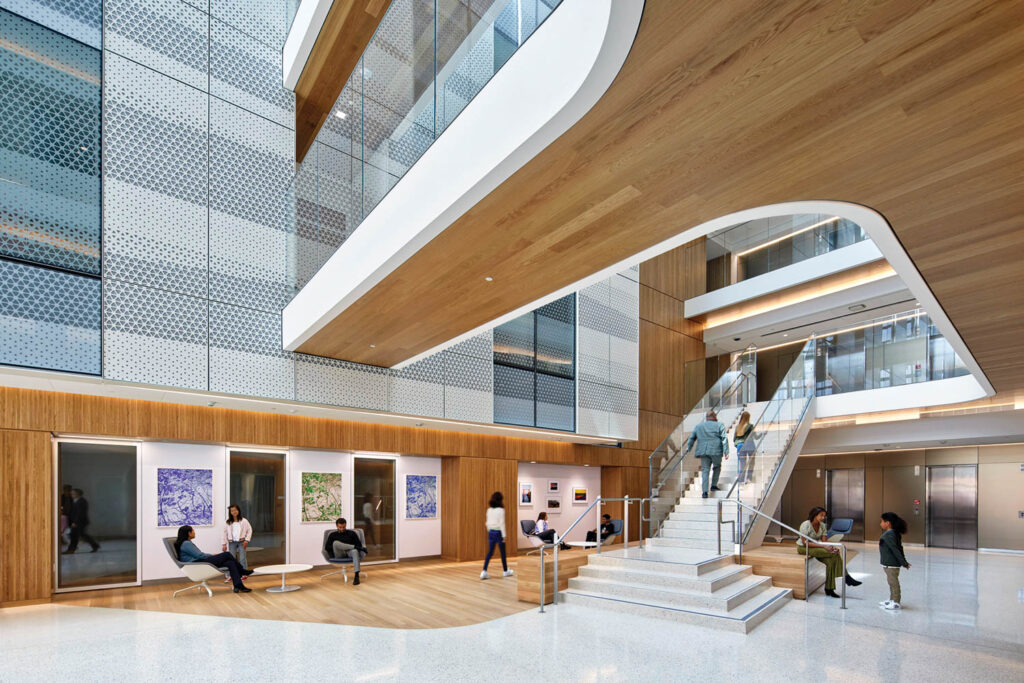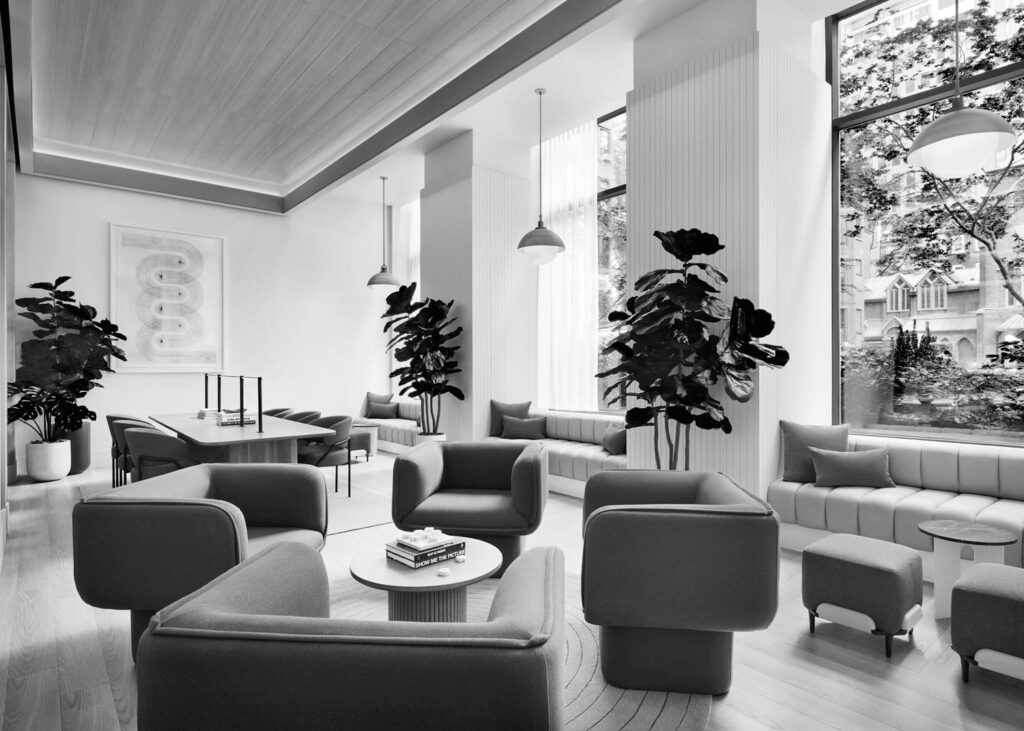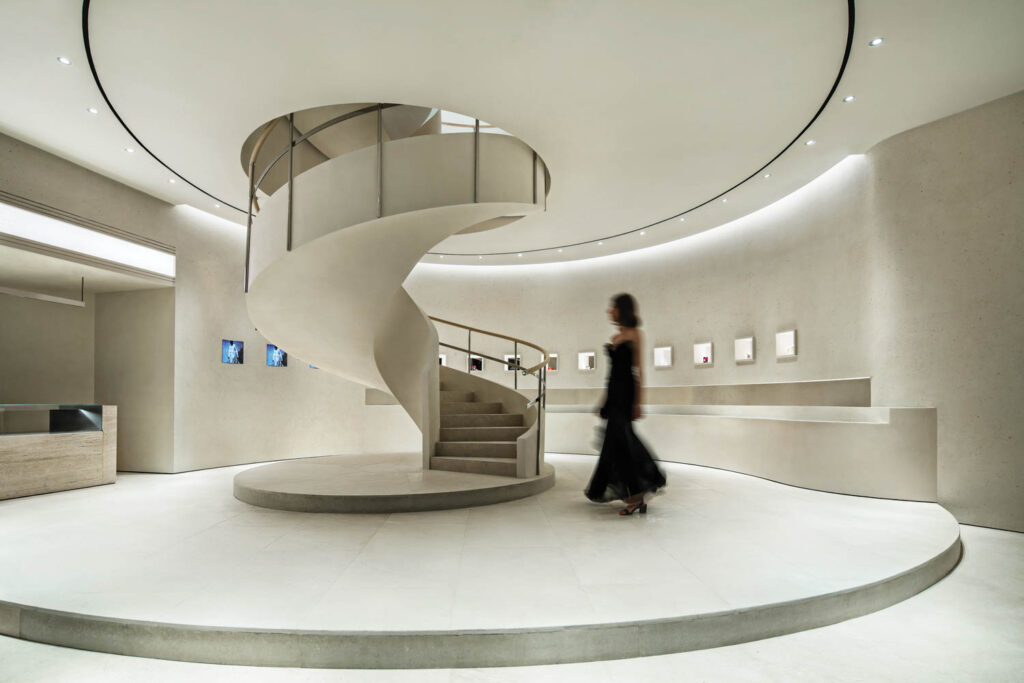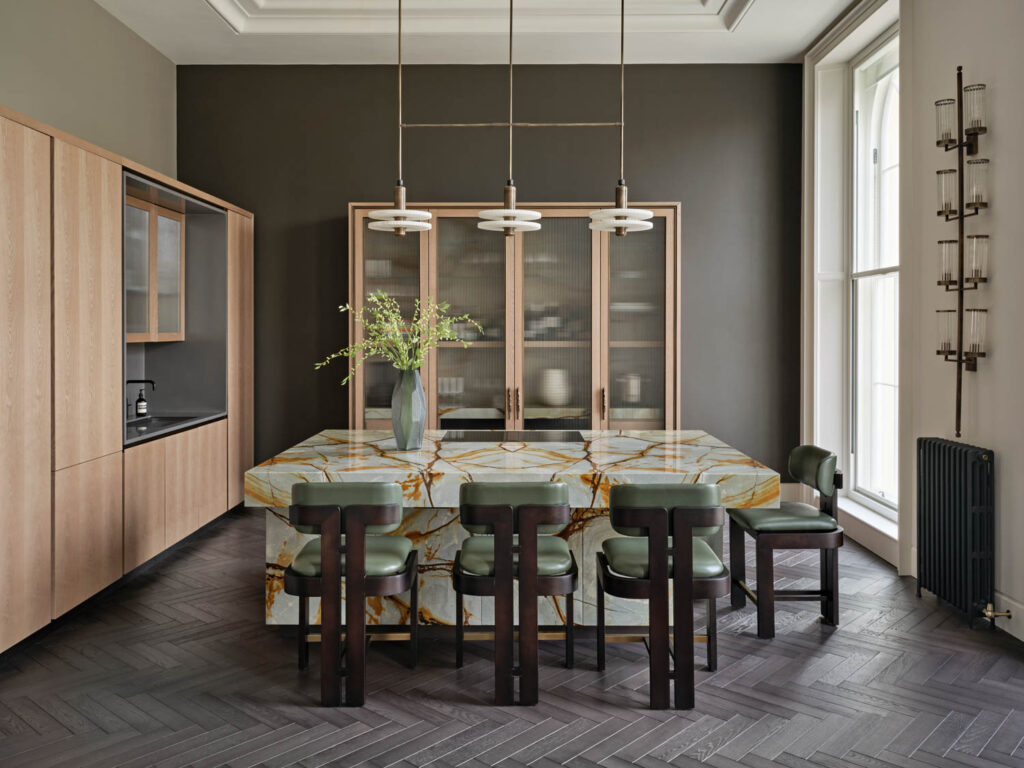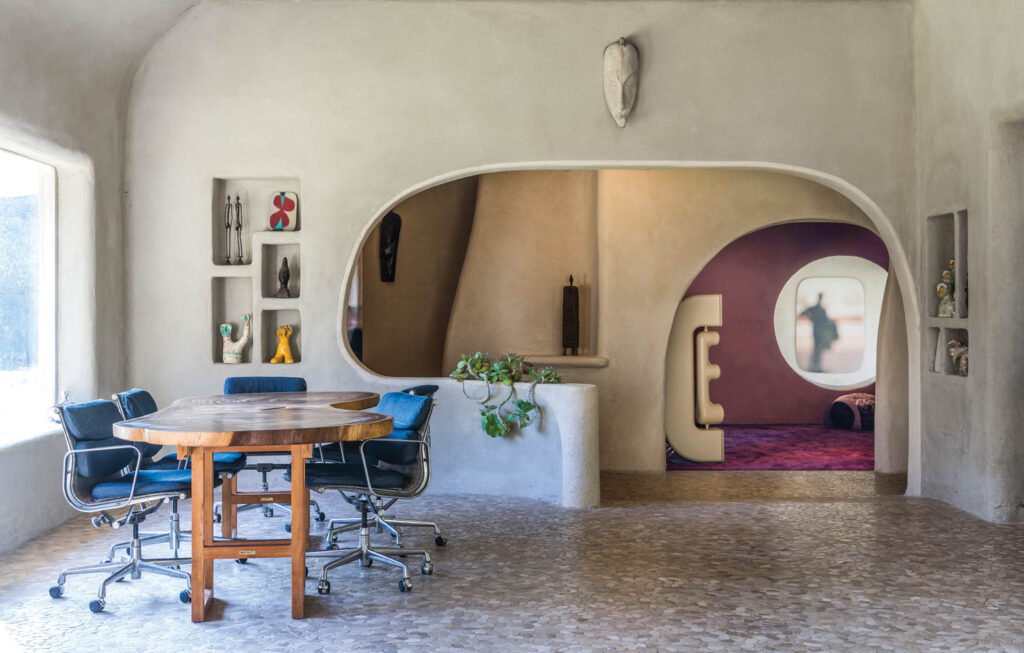
Johns Hopkins University Unveils an Innovative Laboratory
Healthcare’s number-one Giant put its thinking cap on in designing a facility for a renowned research center that employs 6,000 of the nation’s top scientists and engineers for work in homeland security, biomedicine, air and missile defense, and other hush-hush but very important endeavors. An interdisciplinary team from CannonDesign—drawing staffers from six offices across three time zones—oversaw the creation of the Applied Physics Laboratory’s new Building 201. The fourth floor of the 263,000-square-foot, five-story structure cantilevers on an asymmetrical forest of mirror-finished stainless-steel columns that imbue the edifice with surprising airiness. Inside, the team combined labs and workspace for the 650-person Research and Exploratory Development Department (APL’s cutting-edge research engine) into a genuinely collaborative network of spaces. “The building fosters an environment where employees can truly flourish,” CannonDesign’s science and technology practice director Stephen Blair explains. To wit: the skylit atrium crisscrossed by seven bridges and five stairs that encourages intermingling between scientists from different teams—proof that architecture can quite literally bridge gaps dividing disciplines.
A Closer Look at Johns Hopkins University Applied Physics Laboratory




read more
Projects
ZGF Designs a New Center for Mental Health at University of California, San Francisco
ZGF Architects designs a light-filled center for mental health for USCF’s Department of Psychiatry and Behavioral Sciences.
Research
Interior Design Unveils the 2023 Top 100 Giants
Interior Design unveils the Top 100 Giants of 2023. Research suggests the A&D industry is bouncing back after a challenging few years. See the stats.
Research
Interior Design Spotlights 2023 Healthcare Giants
Three years after the start of the pandemic, the 2023 Interior Design Healthcare Giants give a pulse on the state of healthcare design today.
recent stories
Projects
Retail Projects Raise the Bar for Social Responsibility
With such selling points as advanced robotic technologies and social responsibility, retail projects from Shanghai to Philadelphia meet the needs of today.
Projects
Bergman Design House Revives a Collector’s London Home
A collection of striking artwork matches the royal grandeur of this warm, elegant London residence with interiors by Bergman Design House.
Projects
Umu’s Founder Creates a Sustainable Family Home in Belgium
In the Belgian countryside, artist, designer, and Umu founder Sven Bullaert crafts his family home in a manner that’s both sustainable and groovy.
